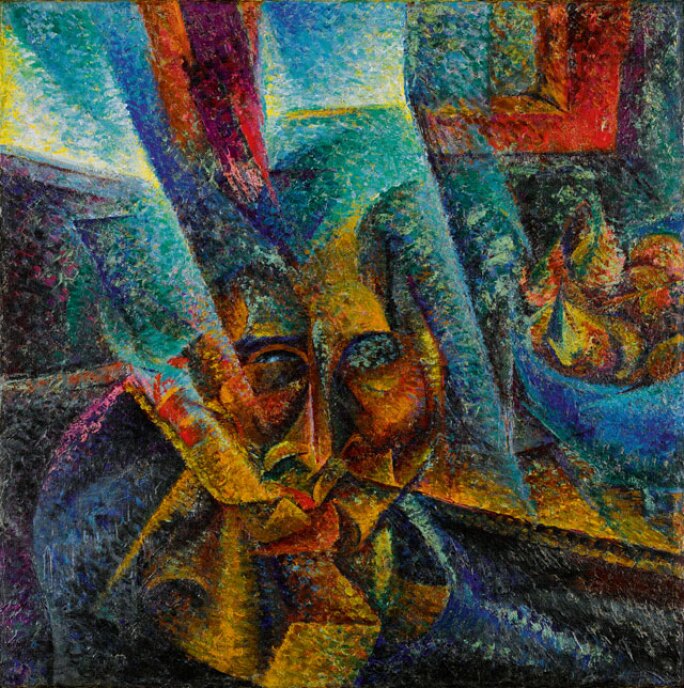"W e intend to exalt aggressive action, a feverish insomnia, the racer’s stride, the mortal leap, the punch and the slap."
Courageous, audacious, dynamic: the Futurists were the punk-artists of their age. Their manifesto demanded a complete break with the art of the past and the creation of a new art for a new age. They proclaimed a desire to ‘re-enter life’ through a focus on speed, change and violence.
The term ‘futurism’ was first coined in 1908 by the poet and editor Filippo Tommaso Marinetti; in February 1909 he published the first Futurist manifesto in which he set out his intentions for a new type of poetry. That same month he met with Carlo Carrà, Umberto Boccioni and Luigi Russolo and they began work on a second manifesto that incorporated the visual arts; it was published a year later with the support of Gino Severini and Giacomo Balla and Futurist painting was born.
"Comrades! We declare that the triumphant progress of science has brought about changes in humanity so profound as to dig an abyss between the docile slaves of the past and us who are free, us who are confident in the shining splendour of the future."
They declared war on the past, instead celebrating modern life and all the noisy energy and activity of technology and industry. In part this was a resistance against the anonymity of contemporary experience; their painting was focused on the human – and individual – experience. Central to this was their perception of action – dynamic movement. At first this was conceived in the literal sense of painting a car, a train, an aeroplane but it came also to encompass the idea of the movement (or dynamism) within an object. They argued that there is no fixed object, only the perception of an object within a constantly shifting framework of colour and light and they sought to capture this in their art.
"To paint a human figure you must not paint it; you must render the whole of its surrounding atmosphere."
Umberto Boccioni’s Testa + luce + ambiente is the absolute embodiment of these ideas. In 1911 Boccioni had travelled to Paris and his contact there with the Cubist art of Picasso and Braque presented new possibilities for the way that light and motion might be used to overcome concrete form. In 1912 he also began to focus increasingly on sculpture, this growing awareness of the three-dimensional introduced a new volumetric plasticity to his painting. In his manifesto on sculpture, published in April 1912, Boccioni announced: ‘We will break open the figure and enclose it in its environment’ and Testa + luce + ambiente illustrates the height of his achievements in this respect. The figure at the heart of the composition is wholly subsumed into her surroundings; she is everything and everywhere and so we perceive simultaneously window and picture frame and fruit bowl and table and figure and face. The viewer is brought fully into the living experience of the painting and the moment, which is now, and forever.
"Your eyes, accustomed to semi-darkness, will soon open to more radiant visions of light. The shadows which we will paint will be more luminous than the highlights of our predecessors, and our pictures, next to those of museums, will shine like dazzling daylight compared with deepest night."
CLICK HERE to view the full sale catalogue.




